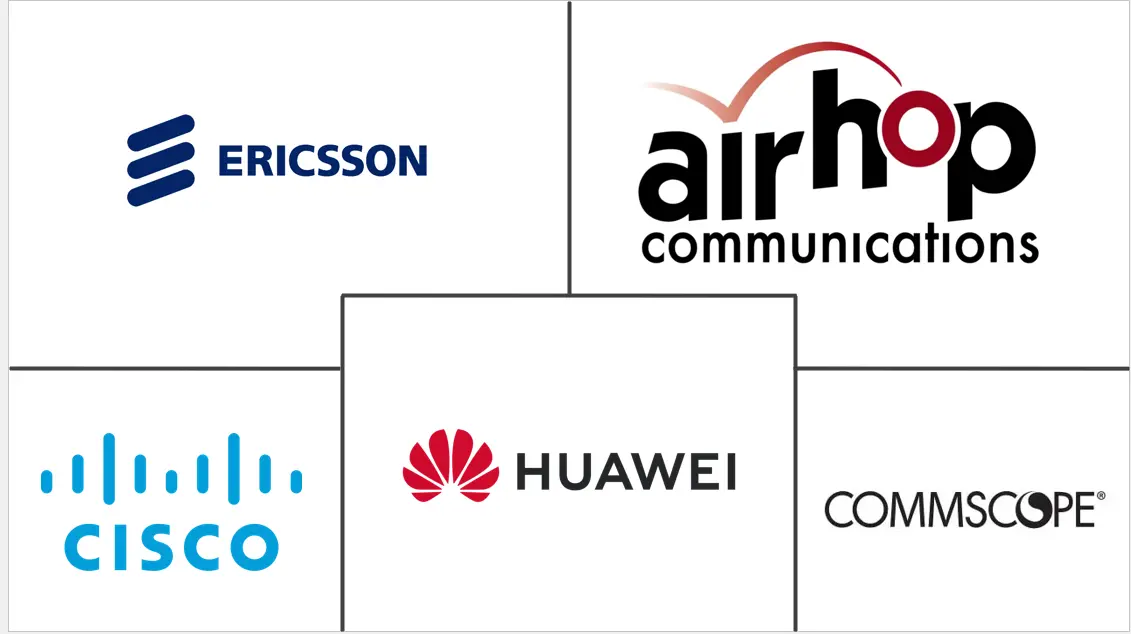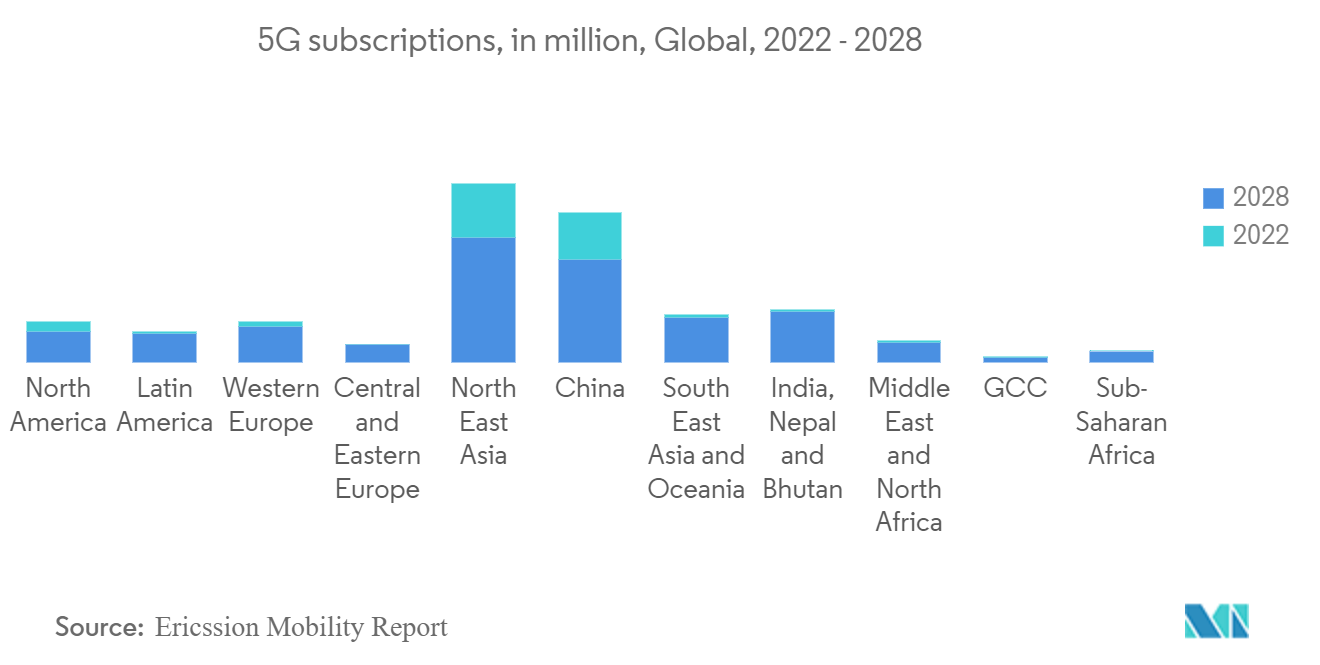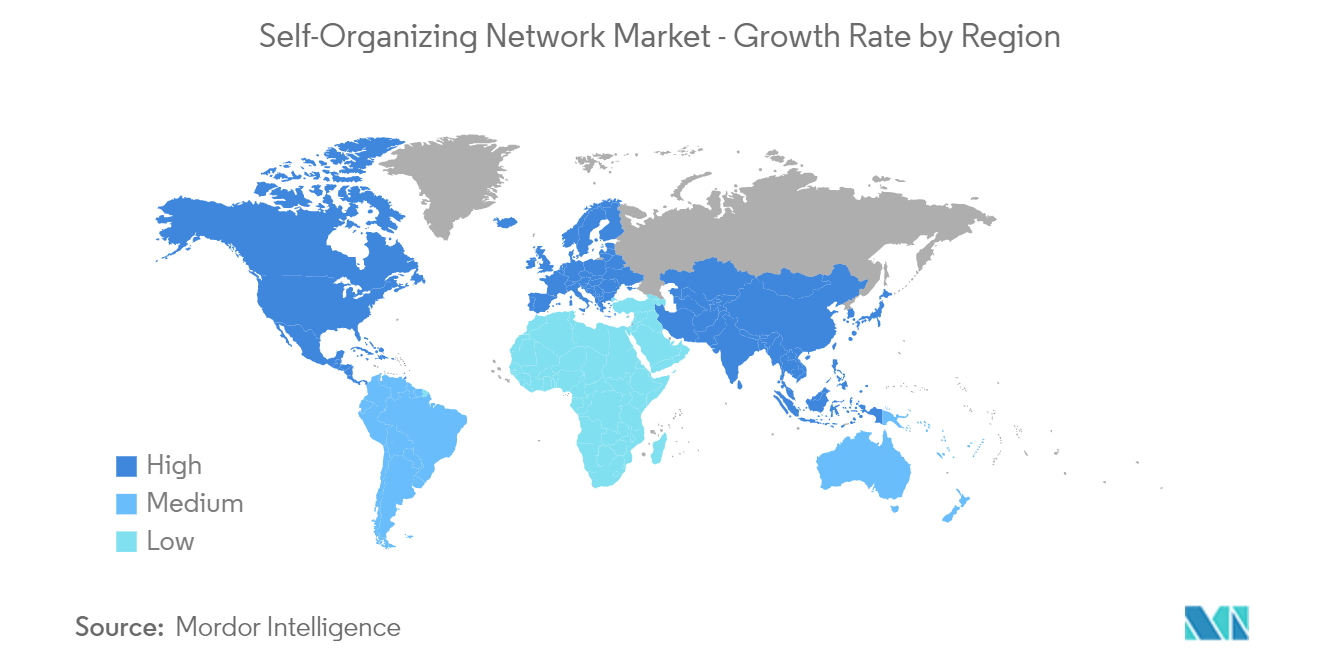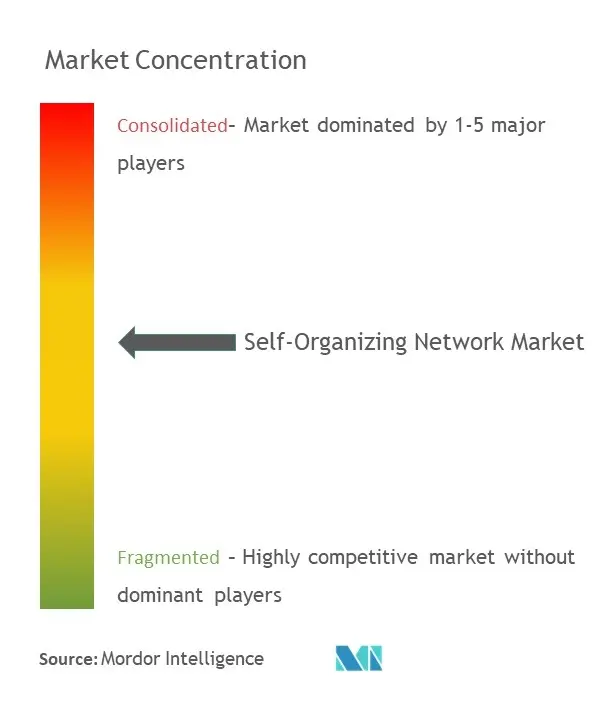Self-Organizing Network Market Analysis
The Self-Organizing Network Market is expected to register a CAGR of 11% during the forecast period.
- Growing urbanization and demand for advanced systems to manage network complexities is one of the main factors driving the market growth. SON offers effective network traffic management, lower operating costs, and improved customer satisfaction. Furthermore, SON simplifies and streamlines the management of multi-technology and multi-vendor networks, allowing providers to deliver faster services at a lower cost.
- The significant growth in information technology (IT) infrastructure and vast telecommunications expenditures are expected to boost the market growth. For Instance, Ericsson recently announced that Becker Mining Systems AG had inked a multi-country reselling deal with Ericsson to market and supply Ericsson Private 5G and Ericsson Private Networks to the mining sector.
- The 5G network implementation is substantially more complicated, and this will facilitate a need for improved operations and OSS (Operations support systems). The Self-Organizing Network (SON) is included as part of the network framework as a critical driver for enhancing OSS for LTE and 5G systems. It indicates that SON will have a significant positive impact on network operations.
- For instance, Verizon's innovation on VRAN (Virtualized Radio Access Network) plans to deploy over 8,000 virtualized cell sites, with a target of delivering over 20,000 by the end of 2025. The transition to a cloud-based, virtualized architecture with standardized interfaces in every part of the network leads to better flexibility, faster service delivery, higher scalability, and improved network cost efficiency. Such initiatives from the key players in the market would create new growth opportunities for the Self-Organizing Network market.
- During the COVID-19 scenario, most people preferred work-from-home mode, thus increasing high-speed Internet services demand. Post COVID-19, the 5G subscription penetration is further growing and thus creating new growth opportunities for the Self-Oraganizing Network market.
Self-Organizing Network Market Trends
Increasing demand for 5G Networks
- The demand for SON software owing to the upcoming 5G and 4G technology growth, is predicted to grow significantly over the next five years. The increasing wireless connection demand and the necessity to handle expanding network complexity with a growing number of tiny phone users are driving the market growth of self-organizing networks (SON).
- Furthermore, key players in the market are focused on investments, acquisitions, and partnerships. These strategies are projected to increase the market growth opportunities. For Instance, Ericsson, in collaboration with BT, announced a second major contract for a European port to deploy a private 4G/5G network in the U.K.'s Port of Tyne.
- For Instance, VMware introduced several updates to its RAN portfolio of products VMware RAN Intelligent Controller (RIC). VMware RIC, along with VMware Telco Cloud Platform RAN, will help service providers smoothly transition to Open RAN. Such Initiatives in the network infrastructure would create new growth opportunities for the self-organizing network market.
- According to Ericsson Mobility Report, by the end of 2028, 5 billion 5G subscriptions are expected to grow globally, and 5G subscription uptake is faster than 4G. Digital payments are growing, and the demand for high-speed connectivity services like 5G will increase significantly.
Asia-Pacifc is Expected to Register Significant Market Growth During the Forecast Period
- Asia-Pacific may witness increasing internet penetration and high mobile data traffic rates owing to the rising number of planned deployments of LTE networks and the upcoming 5G network. The growing investment by foreign players is one factor driving the demand for the Self-Organizing Network Market.
- According to GSMA, Asia-Pacific will have more than 400 million 5G subscriptions by the end of 2025, representing 14% of overall mobile subscriptions in the region, while 4G subscriptions will significantly decline over the next five years.
- The increasing demand for high-speed connectivity services by customers and spending on deploying 5G infrastructure will positively influence the Asia-Pacific self-organizing network market. For Instance, Opticoms partnered with Innovile to manage and optimize the Open RAN private 5G network.
- Key players in the Self-Organizing Network market are expanding their market presence through acquisitions and partnerships. For Instance, Qualcomm acquired Cellwize to enable Open RAN (radio access network) to simplify the deployment and expansion of 5G infrastructure.
Self-Organizing Network Industry Overview
The Self-Organizing Network market is moderately fragmented due to ongoing partnerships and current advancements in the market. Some major players in the market studied include Ericsson, Airhop Communications, Cisco Systems, Huawei Technologies, and Commscope.
February 2022 - AirHop Communications, a leader in 4G and 5G real-time (RT) Radio Access Network (RAN) Intelligence software solutions, announced they are delivering their AuptimTM family of 4G/5G xApp and rApp RAN automation and optimization solutions.
September 2022 - Ericsson announced a partnership with Nestlé to deploy its first private 5G network in a Latin American factory. Using Ericsson Private 5G, Nestlé is achieving its Industry 4.0 aspirations to move from an automated to an autonomous factory.
Self-Organizing Network Market Leaders
-
Ericsson
-
Airhop Communications
-
Cisco Systems
-
Huawei Technologies
-
Commscope
- *Disclaimer: Major Players sorted in no particular order
Self-Organizing Network Market News
- November 2022 - Cisco AppDynamics launched new AppDynamics Cloud capabilities that allow organizations to achieve observability over cloud-native applications correlated to business context across the entire IT estate.
- October 2022 - Ericsson launched a commercial Ericsson Private 5G rollout in Sweden with X Shore. Using Ericsson Private 5G, X Shore will gain more efficient and flexible production operations while supporting its environmental mission.
- October 2022 - CommScope signed an agreement with Mediacom Communications to power its network migration to a Distributed Access Architecture (DAA).
Self-Organizing Network Industry Segmentation
A self-organizing network (SON) is an automation technology that simplifies mobile radio access networks' planning, configuration, management, optimization, and healing.
Self-Organizing Network Market is segmented by offering (software, services), by architecture (C-SON, D-SON, H-SON), by network technology (2G/3G, 4G/LTE, 5G), and geography (North America, Europe, Asia-Pacific, Latin America, Middle East, and Africa). The market sizes and forecasts are in value (USD million) for all the above segments.
| By Offering | Software |
| Services | |
| By Architecture | C-SON |
| D-SON | |
| H-SON | |
| By Network Technology | 2G/3G |
| 4G/LTE | |
| 5G |
Self-Organizing Network Market Research FAQs
What is the current Self-Organizing Network Market size?
The Self-Organizing Network Market is projected to register a CAGR of 11% during the forecast period (2025-2030)
Who are the key players in Self-Organizing Network Market?
Ericsson, Airhop Communications, Cisco Systems, Huawei Technologies and Commscope are the major companies operating in the Self-Organizing Network Market.
Which is the fastest growing region in Self-Organizing Network Market?
Asia-Pacific is estimated to grow at the highest CAGR over the forecast period (2025-2030).
Which region has the biggest share in Self-Organizing Network Market?
In 2025, the Europe accounts for the largest market share in Self-Organizing Network Market.
What years does this Self-Organizing Network Market cover?
The report covers the Self-Organizing Network Market historical market size for years: 2019, 2020, 2021, 2022, 2023 and 2024. The report also forecasts the Self-Organizing Network Market size for years: 2025, 2026, 2027, 2028, 2029 and 2030.
Our Best Selling Reports
Self-Organizing Network Industry Report
Statistics for the 2025 Self-Organizing Network market share, size and revenue growth rate, created by Mordor Intelligence™ Industry Reports. Self-Organizing Network analysis includes a market forecast outlook for 2025 to 2030 and historical overview. Get a sample of this industry analysis as a free report PDF download.







